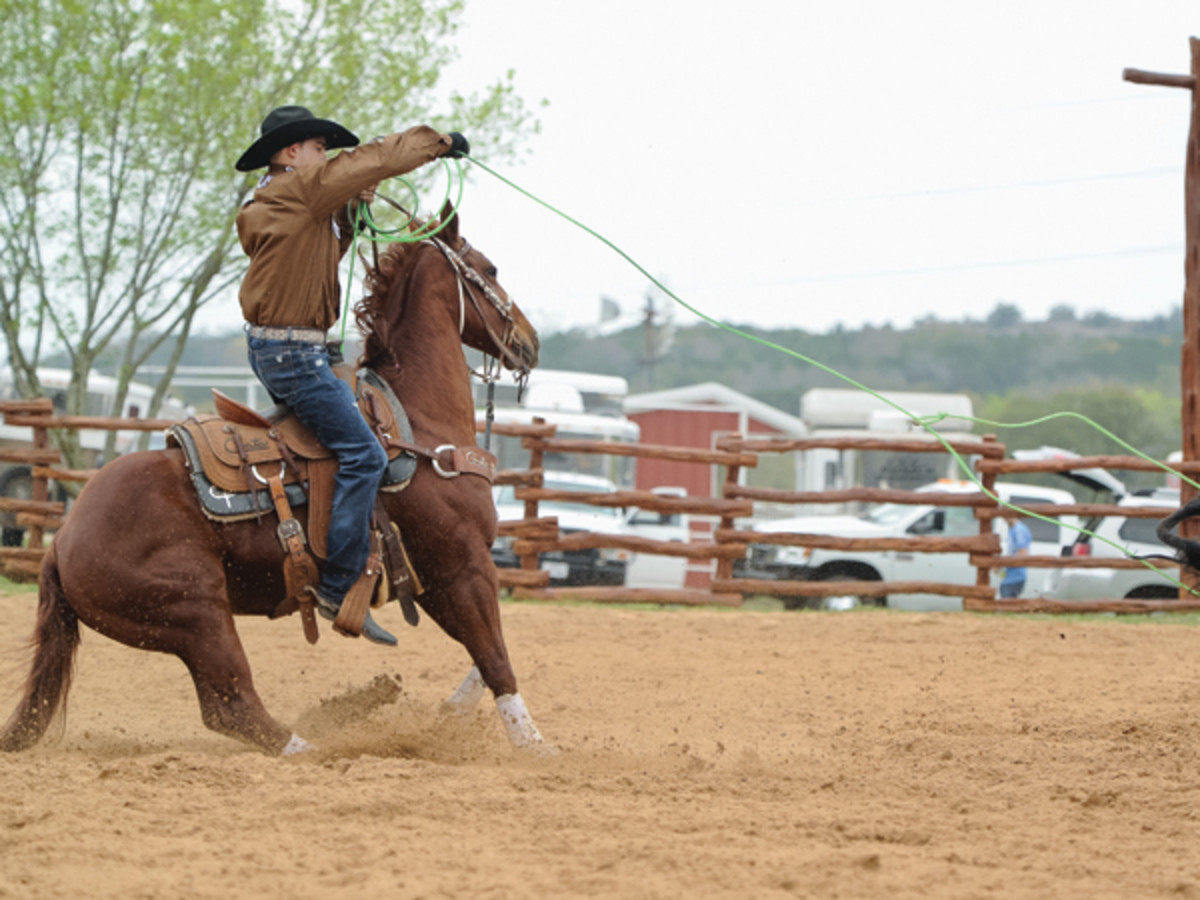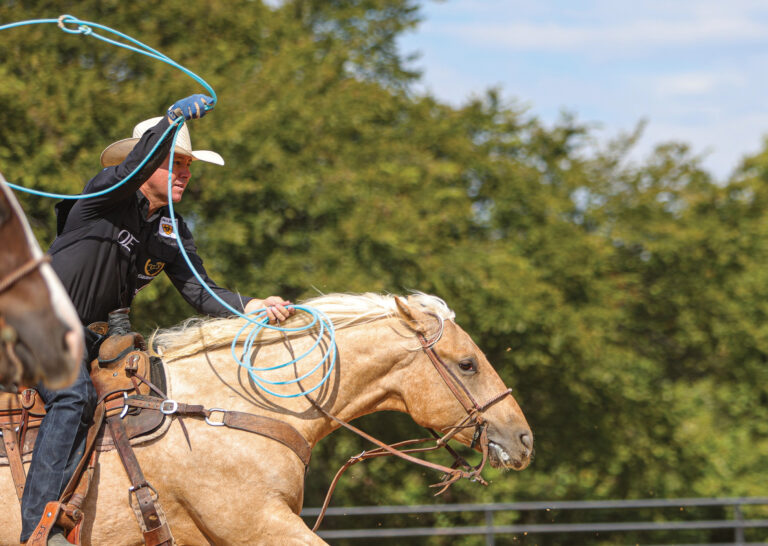Dracula is a San Tule horse that came from the Western States Ranches. Randon Adams started him and Dakota Kirchenslager worked with him, too. To me, those are two of the best horse trainers in the PRCA as far as training horses from scratch. Randon can train cutting horses and then take them to the team roping pen. They’re very versatile. I’ve got four horses from Randon and horses in training with Dakota right now. They can teach horses to do things that horses can’t always do.
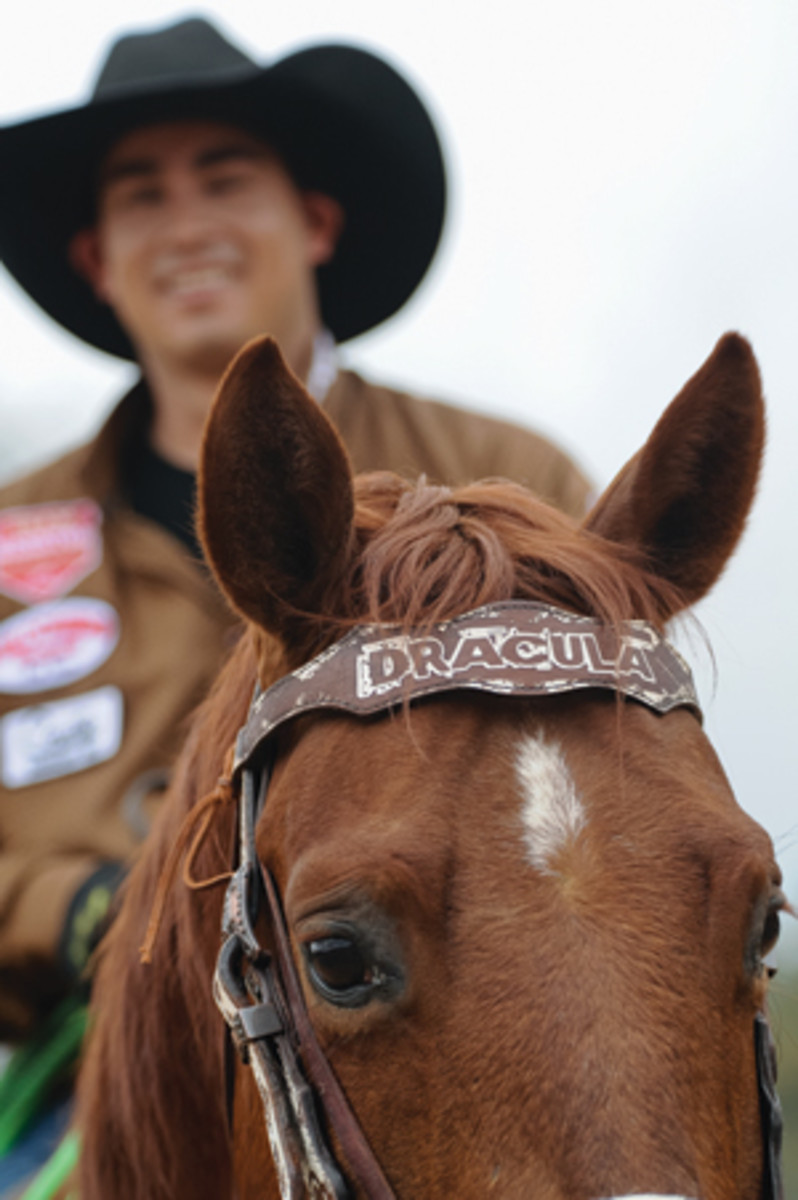
Dracula is tough. You can haul him and rope as many as you want. When we’re having problems, I’ll head on him and I always get along better with him heeling after that. The cutters had problems with him because he was so tough—cutters want their horses smooth. This horse is more violent, but he could drag his belly in the cutting pen. When I bought him, he was seven and I only had him for two weeks. I had to give him a shot in the neck and I wasn’t really looking at him, but out of the corner of my left eye I see teeth. He bit me in the neck and left a nasty mark. I had been searching for names, and that’s when Dracula made sense. You can’t turn him out with other horses and if he gets too close to steers he’ll take a chunk out of them, too.
1. Dracula is a big-time stopper. Right here, I try to sit up, but I have to stay very balanced. If I go forward even just a little bit, he’s got such a violent stop, I could get out of position. He hits with his hind end and pulls with his front end, so it’s important to stay balanced.
I’m just barely starting to pick him up to let him know I’m wanting to throw. In my delivery, I’ll give him back his head so he can get collected on his own, so when I pull my slack he’ll be squared up to dally.
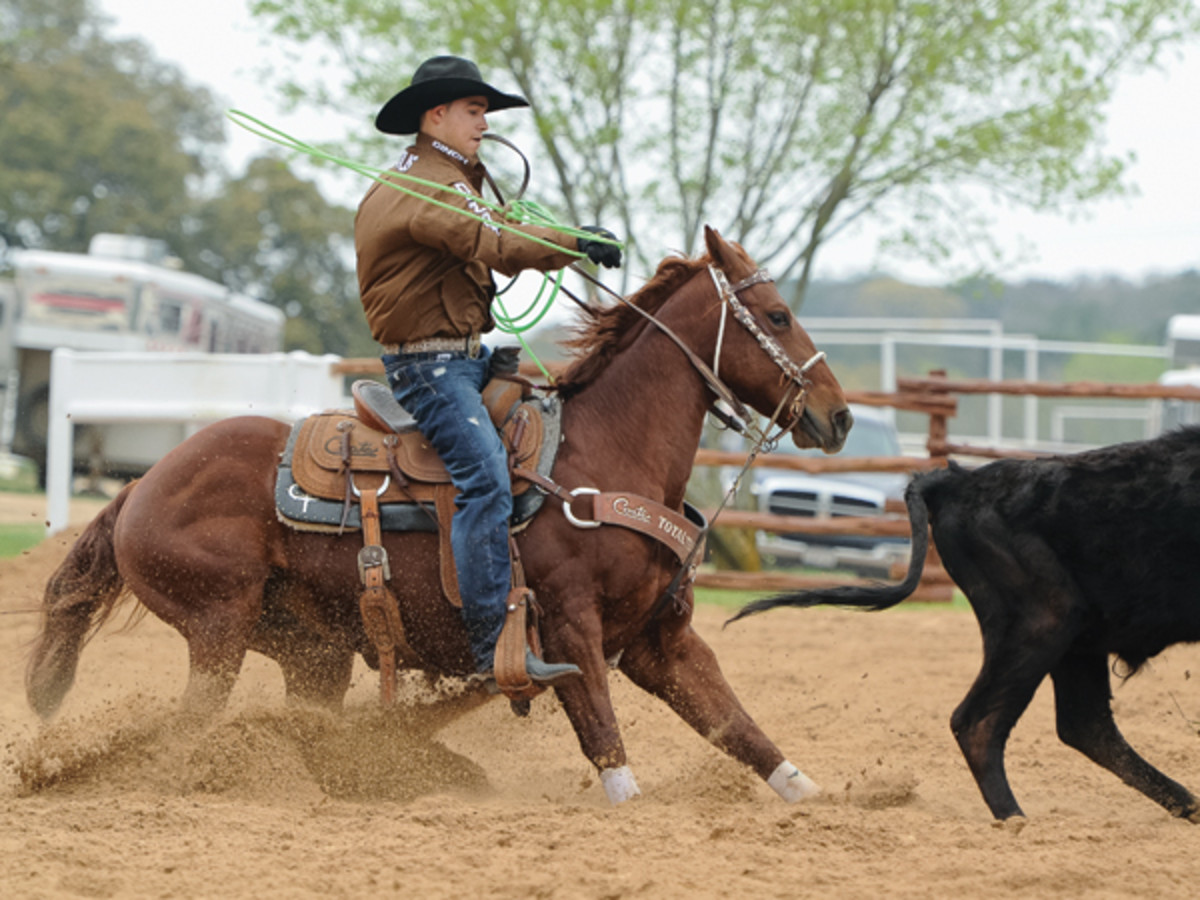
2. I’m starting to give him back his head and place my loop on the ground. You’ll notice how this horse is really starting to pick his front end up while his hind end is completely on the ground, but he’s still keeping his front end moving. This is important because it allows me to place my bottom strand on the ground. If a horse hits on his front end, the loop will just crumble. So he needs to stay free in his front end and get down with his hind end. Balance is still very important for the horse to stay under me. If I get too far forward, that’s when his front end will start to lock up. You’ve got to stay out of a horse’s way that stops like Dracula does.
3. I’m really trying to get that bottom strand on the ground and my horse is really getting underneath himself and getting prepared for the stop. He’s not the biggest heel horse in the world, but he’s pound-for-pound the strongest heel horse I’ve ever ridden. He stops really square with the steer. You’ll notice I’m trying to give him back his head so he can get square for the jerk. You don’t always want to be pulling on the horse. Especially a horse that stops like that, you want to squeeze with your legs. Right here, I’m squeezing him just a little, because I need just a little more out of him to finish my delivery.
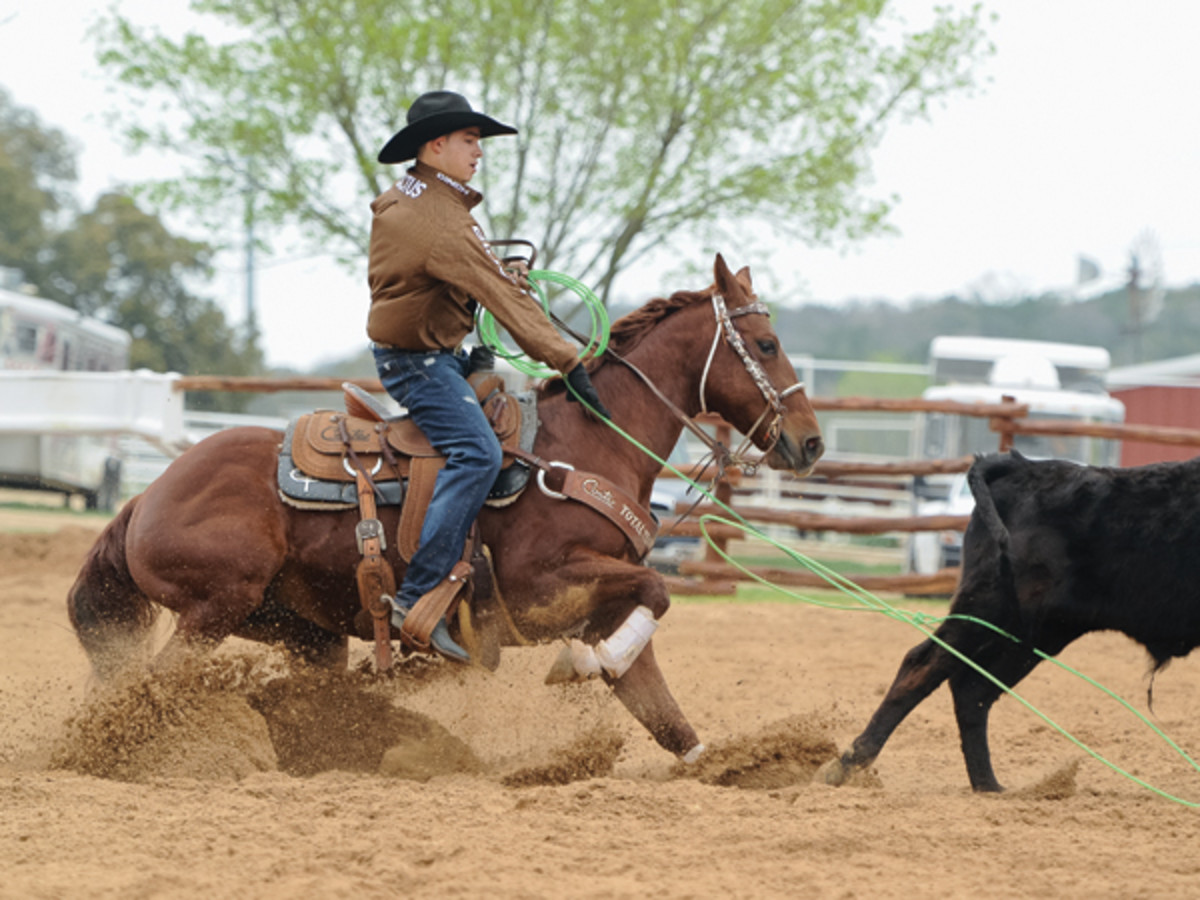
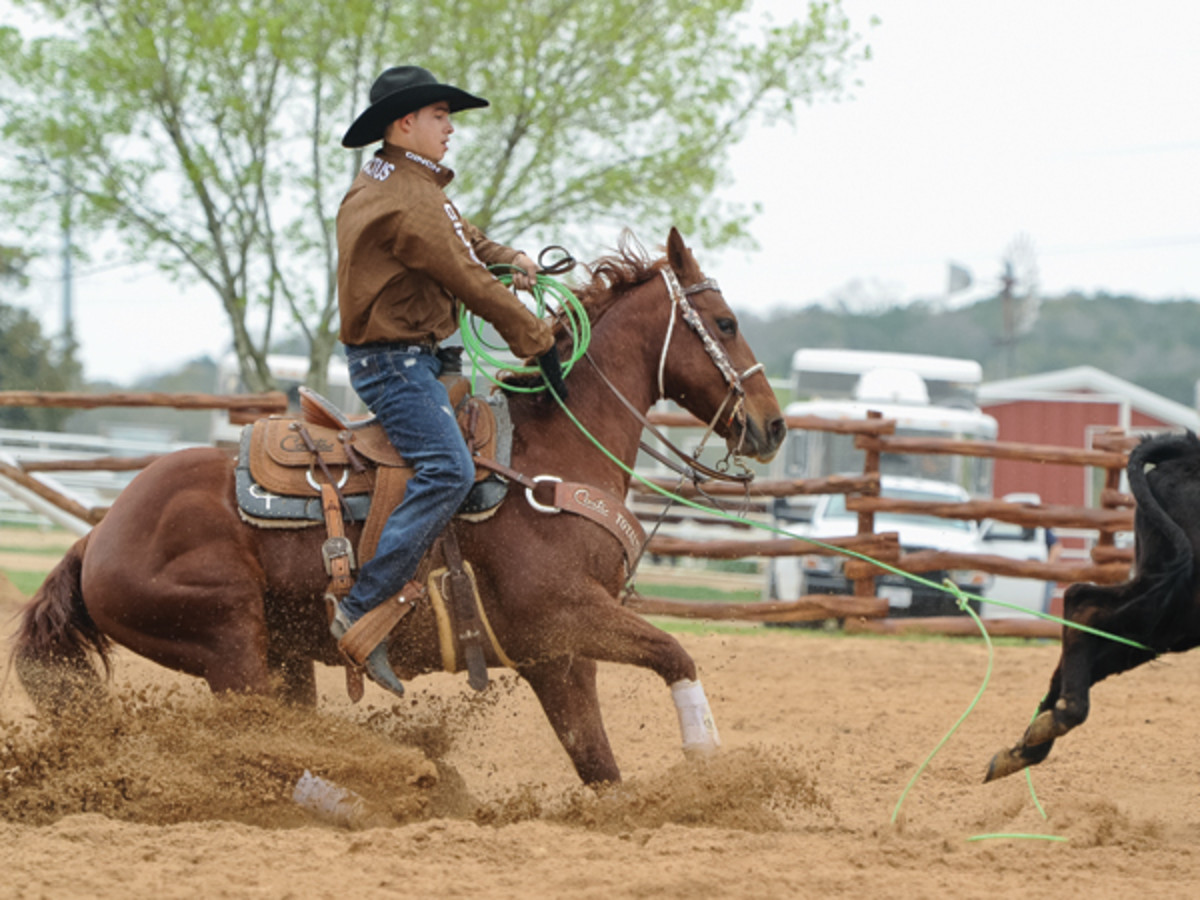
4. This is ideal. You’ll notice from the first frame to this picture, he’s still sliding. He went about 8-10 feet without ever picking up his hind end, just pulling with his front end. Now, I want him to lock up with the front end and prepare for the jerk. I’m getting all my slack out of the rope and you’ll notice that I’m getting him prepared for the jerk with my left hand by picking him up. That picks the saddle horn up and makes it easier to dally. If a horse stops with his head down, that horn disappears.
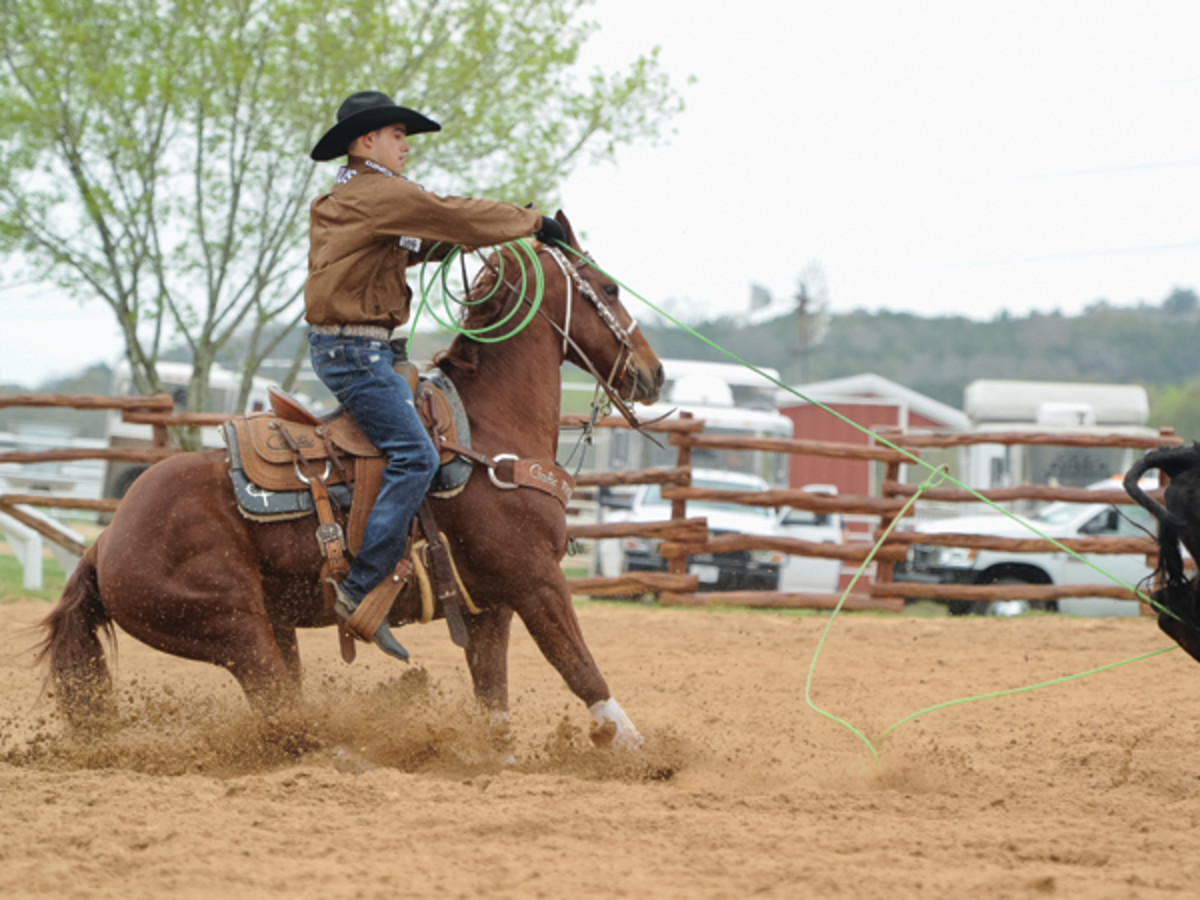
5. I’m getting ready to dally and I feel sorry for this steer. Dracula is out for blood. His hind end is still on the ground. It makes getting your loop on the ground, getting the slack and getting to the horn way easier if your horse will slide. He reminds me of [Randon Adams’ four-time PRCA/AQHA Heel Horse of the Year] Diesel, he’s the closest thing I’ve ridden to that horse and that’s why I bought him.
He’s my number one rodeo horse, he’s nine years old and he’s going to be the one I ride at the NFR this year if we make it. This horse got me there the last couple of years, so I’m looking forward to finishing off a year on him.
